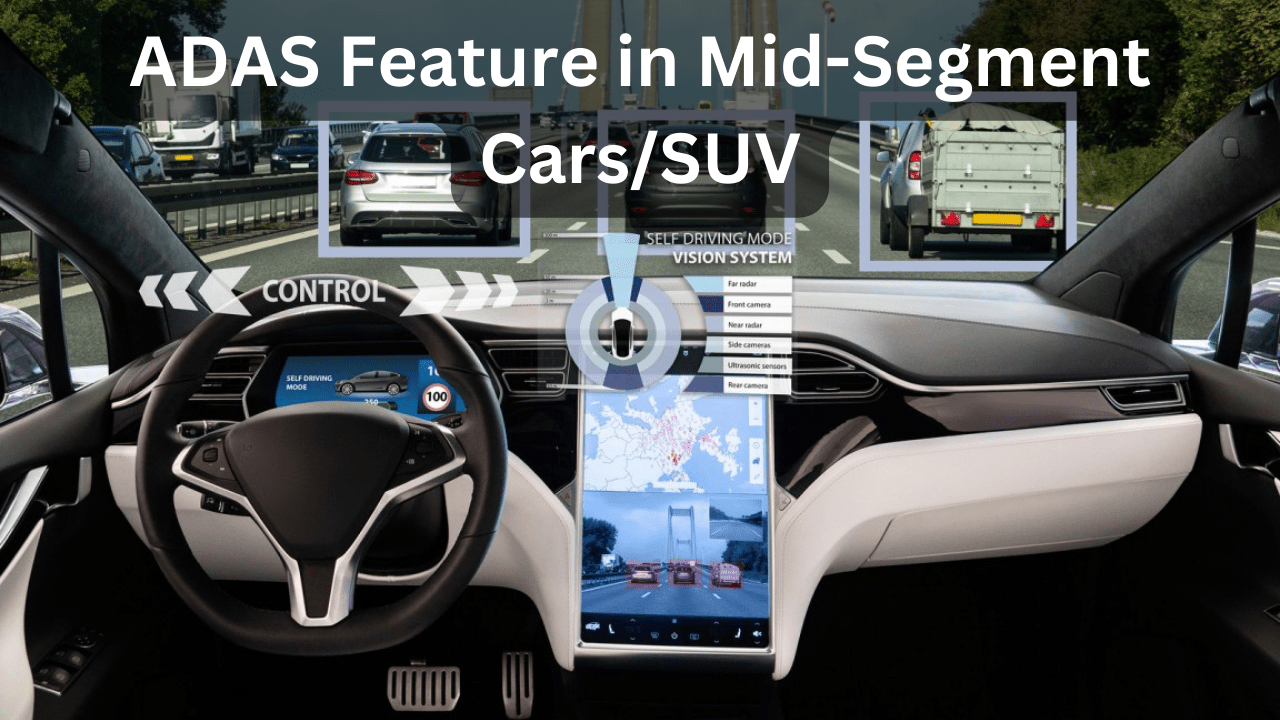Autonomous Driving: In a surprising turn of events, India, an unlikely market for Autonomous Driving Assistance Systems (ADAS), is emerging as a significant player in the global landscape. The demand for ADAS technology is witnessing an upswing, with car manufacturers incorporating advanced driver assistance features as standard offerings in mid-segment vehicles. This shift is not only reshaping the Indian automotive industry but is also catching the attention of major ADAS gear makers worldwide.

The Unexpected Surge: A Closer Look at Mobileye’s Experience
For Mobileye Global Inc., an Intel-owned Israeli company specializing in chips and systems for advanced driver assistance technology, India was not initially considered a priority market. However, over the last 12 months, a remarkable surge in demand for its next-generation systems-on-chip, sensing, and mapping software for driver assistance technology has taken Mobileye by surprise. Orders from India have soared, nearly quadrupling the company’s initial forecasts.
The recent announcement of an order from Mahindra & Mahindra Ltd. for advanced driver assistance technology underscores the growing significance of the Indian market. Other major Indian automakers are following suit, integrating ADAS features into higher-trim variants of mid-segment sedans and SUVs. This trend has prompted Mobileye to elevate India to the status of a priority market in Asia, alongside China.
Maruti Suzuki Grand Vitara: Comparing CSD Canteen Prices and Ex-Showroom Costs (Chart)
From Advanced Driver Assistance to Fully Autonomous Systems
Mobileye’s Chief Executive Officer, Amnon Shashua, revealed the company’s new operating system, ‘DXP,’ at the Consumer Electronics Show in Las Vegas. Alongside the increasing demand for the latest suite of ADAS features from India, a surprising trend has emerged – the demand for Mobileye’s SuperVision package. This advanced driver-assist system leverages surround vision, utilizing a suite of 11 cameras to provide ‘hands-free’ autonomous capabilities for human-driven vehicles.
Justin Hyde, Director of Communications at Mobileye, emphasized that the response to premium ADAS gear was not limited to the Mahindra & Mahindra order. The broad-based response from various companies in India indicates a growing interest in enhancing both safety and convenience through ADAS systems.
Changing Perceptions: ADAS Demand in India
Traditionally, India has not been seen as a priority market for ADAS systems due to its challenging driving environments and notorious road conditions. However, with a progressive democratization of autonomous driving tools, Indian car manufacturers are now offering advanced driver assistance systems as standard features on mid-segment vehicles.
Major automakers, including Mahindra & Mahindra, Hyundai, Kia, Honda, and Tata Motors, are incorporating ADAS features such as lane keep assist, front collision warning, adaptive cruise control, and more into their vehicles. This move is aimed at improving overall road safety and reducing accidents and fatalities in a country known for having the world’s deadliest roads.
Levels of Autonomous Driving: A Brief Overview
The evolution of autonomous driving is categorized into five levels, each defining the extent to which a car takes over responsibilities from the driver. As of now, most carmakers seem to have reached Level 2 ADAS, offering features like steering and lane-keeping assist, adaptive cruise control, and more.
While Level 3 involves a greater array of automated driving tools, Level 4 signifies fully automated driving, allowing the driver to take hands off the steering wheel for most of the drive. Level 5 represents full automation, where the car can drive without any human input. Moving up from Level 2 to Level 5 poses challenges, including issues such as cars not recognizing pedestrians or identifying obstacles like cyclists behind parked vehicles.
The Road Ahead for ADAS in India
The unexpected surge in demand for ADAS technology in India signals a transformative phase for the automotive industry. As major players like Mobileye gear up to meet this demand, the integration of advanced driver assistance features into everyday vehicles is set to redefine road safety standards and pave the way for the future of autonomous driving in India.